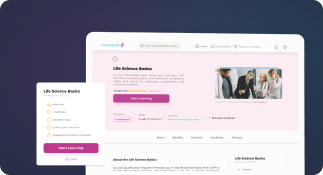How to Get Six Sigma White Belt Certification
Definition
Six Sigma White Belt certification is the introductory level of Six Sigma training, designed to provide foundational knowledge of the Six Sigma methodology. It is ideal for individuals who are new to process improvement and want to understand the basic principles, terminology, and structure of Six Sigma.
For professionals in the pharmaceutical, life sciences, and regulatory industries, obtaining a Six Sigma White Belt is a strategic first step toward building a culture of quality and continuous improvement.
Detailed Explanation
What Is Six Sigma?
Six Sigma is a data-driven methodology used to improve processes by identifying and eliminating defects or inefficiencies. It emphasizes statistical analysis, process control, and continuous improvement. Six Sigma is widely used in regulated industries like pharmaceuticals and life sciences to ensure high-quality outcomes and compliance with Good Manufacturing Practices (GMP).
Purpose of Six Sigma White Belt Certification
The White Belt certification serves as an entry point into the Six Sigma framework. It introduces professionals to the core concepts of Six Sigma such as:
- DMAIC (Define, Measure, Analyze, Improve, Control)
- Process mapping and flowcharting
- Basic quality tools and terminology
- The role of Six Sigma in operational excellence
While White Belt holders do not lead projects, they support larger Six Sigma initiatives by understanding the methodology and participating in improvement teams.
How to Get Six Sigma White Belt Certification
Here is a step-by-step guide on how to get Six Sigma White Belt certified, especially tailored for professionals in the pharmaceutical and life sciences sectors:
- Choose a Reputable Provider: Select a certification body or training provider. Some well-known organizations offering Six Sigma White Belt certification include ASQ (American Society for Quality), IASSC (International Association for Six Sigma Certification), and other accredited training institutions.
- Enroll in a Training Course: Most White Belt programs are online and take between 2–6 hours to complete. Some are free, while others may charge a nominal fee.
- Complete the Training: Learn the basics of Six Sigma methodology, including its history, principles, and tools. Training often includes video lectures, reading materials, and quizzes.
- Pass the Assessment: After training, you’ll typically need to pass a short multiple-choice exam to demonstrate your understanding of the material.
- Receive Your Certification: Upon successful completion, you’ll receive a digital or printed certificate recognizing your Six Sigma White Belt status.
Applications in the Pharmaceutical and Life Sciences Industries
In highly regulated environments like pharmaceuticals and biotech, Six Sigma can be applied to:
- Streamline manufacturing processes to reduce batch failures
- Enhance compliance with FDA and EMA regulations
- Improve clinical trial efficiency and data integrity
- Reduce variability in laboratory testing and production
White Belt training helps employees at all levels understand the value of quality initiatives and supports a collaborative approach to continuous improvement.
Benefits of Six Sigma White Belt Certification
- Improved understanding of quality and compliance principles
- Enhanced communication with Six Sigma teams
- Increased value to employers in regulated industries
- Foundation for further Six Sigma certifications (Yellow, Green, Black Belt)
Choosing the Right Course
When selecting a Six Sigma White Belt course, consider the following:
- Accreditation: Is the provider recognized by industry bodies like ASQ or IASSC?
- Industry Relevance: Does the course include examples or case studies from the pharmaceutical or life sciences sectors?
- Certification Validity: Will the certificate be accepted by employers or regulatory agencies?



